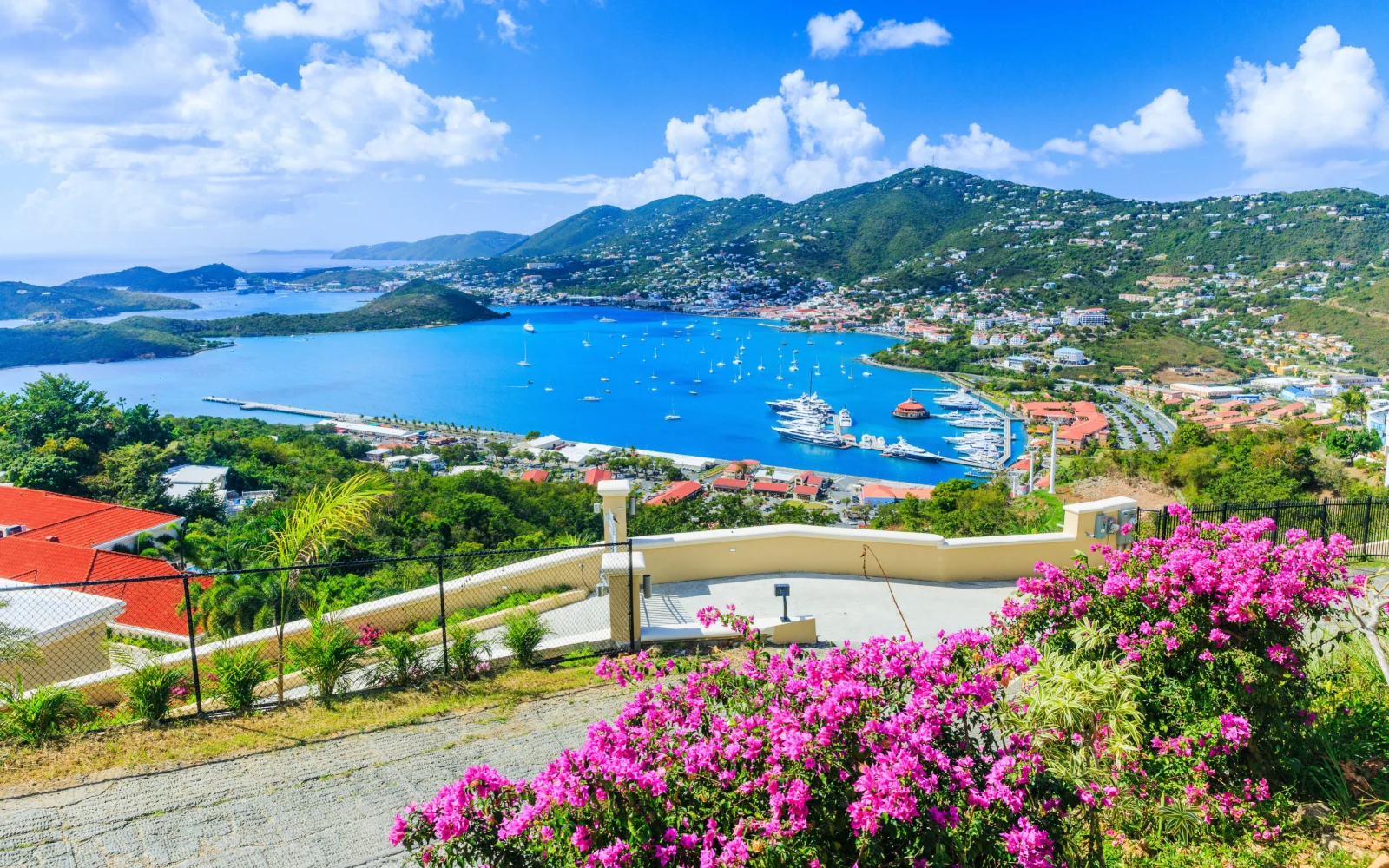What's the best time to visit the US Virgin Islands?
The best time to visit the US Virgin Islands is from April to June, offering a balance of fewer tourists, comfortable temperatures ranging from 80.6°F to 89°F, and affordable prices. This period falls between the busy peak season and the hurricane season, making it ideal for enjoying outdoor activities and clear blue skies.
The US Virgin Islands are an exciting, lovely, and vibrant destination. Given their exceptional hospitality, cute towns, pleasant nature, and astonishing beaches, they’re one of those must-visit-before-you-die kinds of islands. But when is the best time to visit the US Virgin Islands?
This is largely going to depend on your budget, preferred climate, and other factors. We’ll show you this and more below.
The Best Time to Visit US Virgin Islands
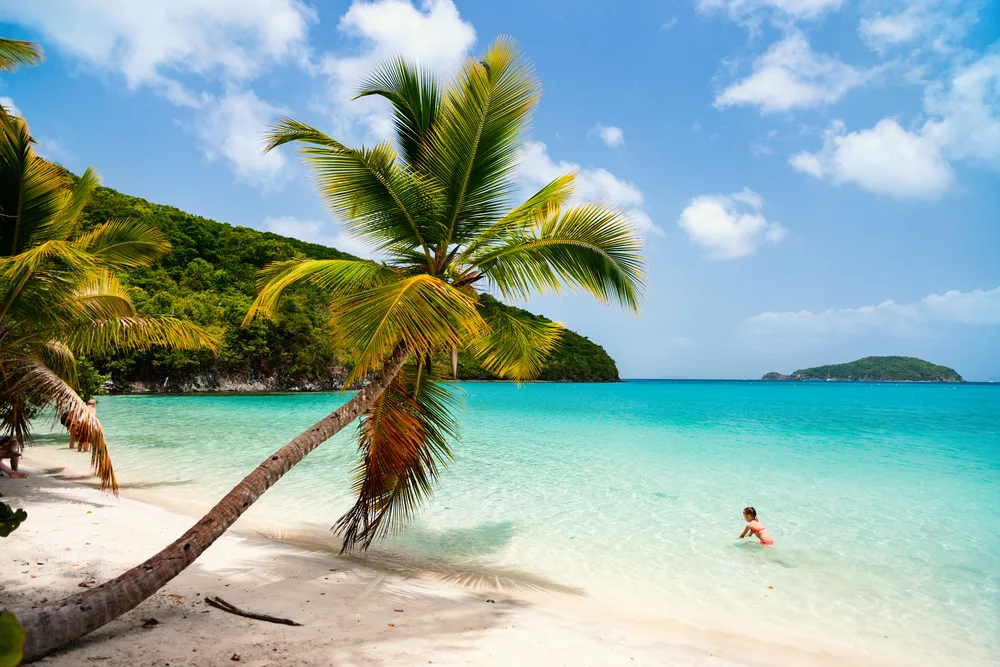
BlueOrange Studio/Shutterstock
The best time to visit the US Virgin Islands is from April through June. This is when there are fewer tourists, and comfortable temperatures are accompanied by lower prices.
What makes these months the perfect time to visit is that they’re right in the middle between the peak season, which just ended, and the hurricane season that’s yet to begin.
The USVI at this time are ideal for all kinds of outdoor activities, the skies are clear blue, and the sunshine supports all your holiday adventures.
In April, Charlotte Amalie, the capital, sees temperatures fluctuating between an average high of 86°F and an average low of 80°F. May visitors should get ready for temperatures ranging between 87°F and 82°F.
In June, the temperatures vary between 89°F and 84°F. If you want to enjoy the US Virgin Islands to the max, this is the time to do so.
Cheapest Time to Visit US Virgin Islands
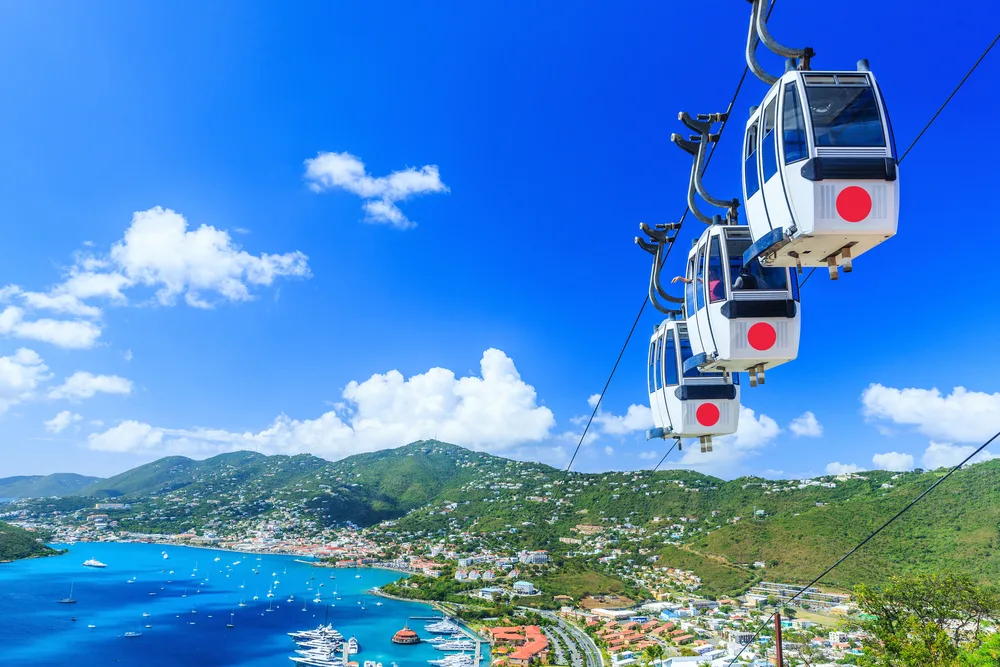
SCStock/Shutterstock
If you’re watching your travel budget, consider visiting the US Virgin Islands either in January and February or in the late-August – mid-November period.
In these off-peak seasons, prices take a nosedive, and your trip is as cheap as it can be (if we can even use the word “cheap” with these islands).
These two periods also see fewer tourists, hence the lower prices. This is the time to search for attractive airfare prices, as well as discounted hotel and resort packages.
January temperatures vary between 84°F and 78°F. The February climate welcomes visitors with the same temperatures — an average high of 84°F and an average low of 79°F. In August, the temperatures fluctuate between 90°F and 84°F.
September sees temperatures with an average high of 89°F and an average low of 84°F. In October, temperatures range between 88°F and 83°F.
Lastly, In November, the temperatures reach an average high of 87°F during the day and an average low of 81°F at night. That said, note that since this period sees fewer crowds, there’s not much going on on the islands either.
But you can always enjoy the beauty of the islands and simply seize the moment. For example, the late summer/autumn period is perfect for those chasing scenic sunsets and early risers who wish to catch the Caribbean sunrise.
Least Busy Time to Visit US Virgin Islands
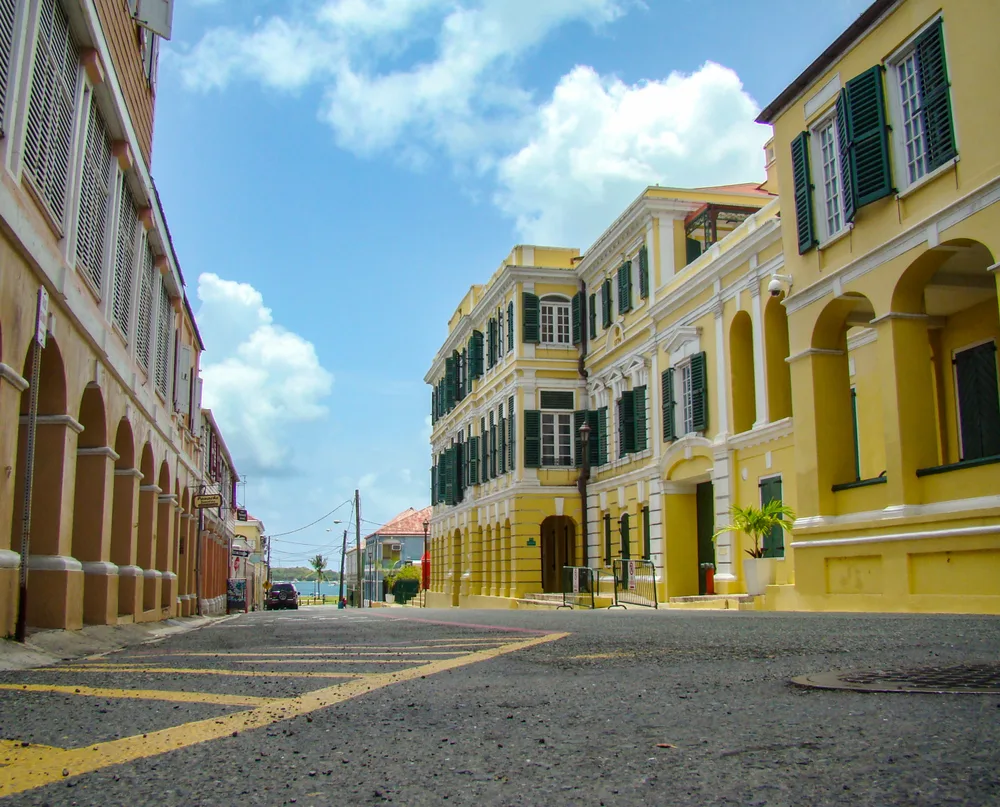
Chad N/Shutterstock
Those who want to avoid the big crowds should plan their trip to the US Virgin Islands from mid-April to May in spring or from mid-September to mid-November in autumn.
In spring, as the tourist season slows, not only is it less crowded, but the hotel rates drop as well. The April-May period is also when the St. Thomas Carnival takes place.
The risk of tropical storms or a hurricane seems to repel travelers, which is why the fall months also see fewer tourists. It goes without saying, but this is also something that you have to keep in mind (more on the hurricane season in a bit).
However, you might get lucky, and the weather still turns out to be gorgeous, allowing you to enjoy the islands without big crowds.
Moreover, in September, kids are back in school, and the weather is cooler, so prices also take a plunge — it’s a win-win for travelers willing to risk facing bad weather but enjoying other benefits such as affordable prices, empty beaches, and a quiet island vibe.
Worst Time to Visit US Virgin Islands
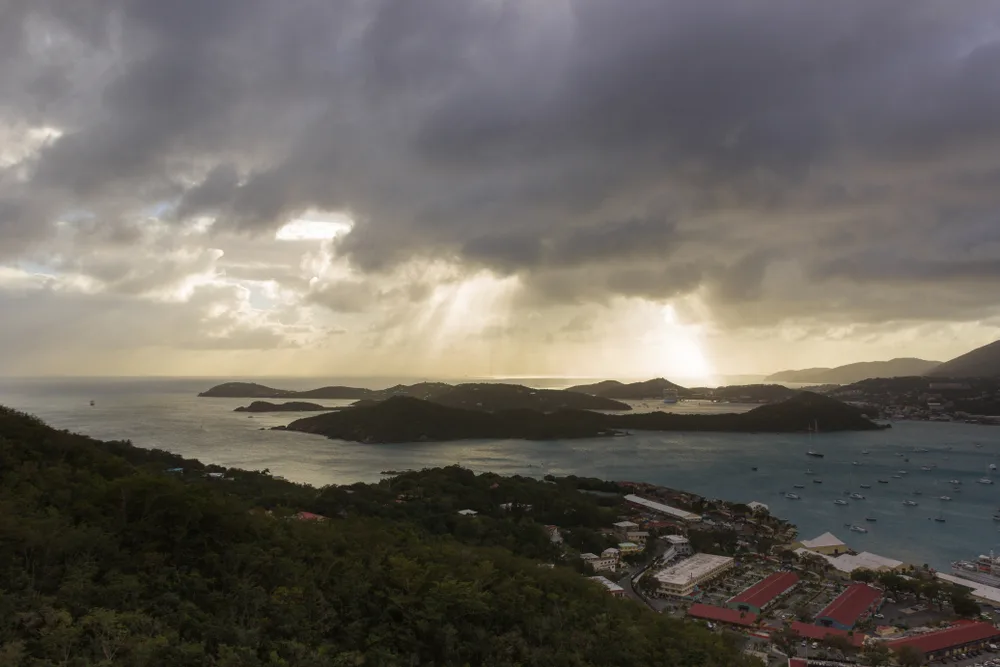
elvirkins/Shutterstock
The worst time to visit the islands is during the hurricane season, or from June to November. July is the most humid month, August is said to be the hottest, and October is the rainiest. Perfect travel-repellent combo!
Given their tropical climate, all islands see a lot of sunshine throughout the entire year. The weather is generally nice, even when it rains; there are brief showers and some thunderstorms every now and then.
However, the hurricane season may bring torrential rains and really strong winds, and that’s what makes this season the most challenging one to navigate. What’s more, the winds may lead to high waves and rough seas, which makes it tricky for beachgoers to even enter the water, let alone enjoy it the way they should.
That said, even if you go to the US Virgin Islands during the hurricane season, not everything is lost.
First of all, there’s no guarantee there will be a hurricane at all (but bad storms are more than likely). Secondly, there are many attractions one can see and indoor activities to engage in when the weather’s not at its best.
For instance, you can check out:
- St. Thomas Synagogue,
- The Pirates Treasure Museum,
- Our Lady of Mount Carmel Catholic Church,
- St. John Experience Gallery,
- Cathedral of St. Peter and St. Paul,
- Spa To Go VI, and many others.
Finally, when the weather allows, you can always make your way to some of the well-known June/July festivals, such as St. John Carnival, one of the biggest cultural events on the island.
Then, there’s St. Croix Mango Melee and Tropical Fruit Festival, which celebrates the tropical fruits on the islands.
Things to Consider
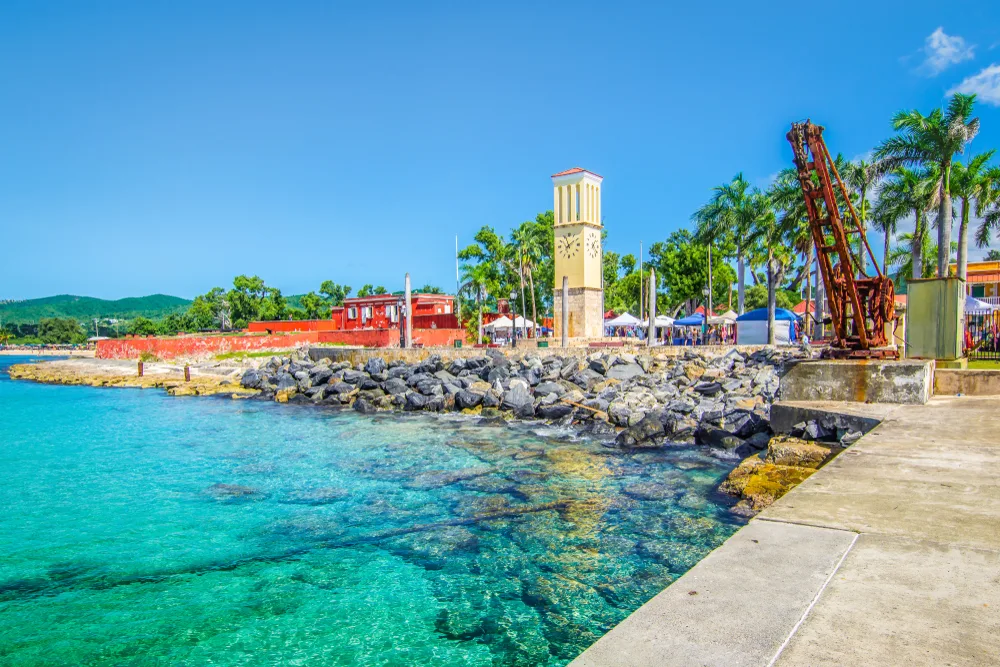
NAPA/Shutterstock
What else should you know before you set off? Here are our best US Virgin Islands travel trips:
- The sea temperature in the US Virgin Islands is warm enough for beachgoers to swim all year round.
- It’s common to greet locals when you enter/leave a room, go to the shop, or come across people in any context that allows for a brief interaction. Be polite — it means a lot to the islanders, and it just takes two seconds of your time.
- Don’t be surprised if you see numerous lizards and medium-sized iguanas wandering outdoors freely during your stay.
- The tipping policy is similar to that of the United States, which means that while 15% to 20% is seen as the standard, tipping more is encouraged for exceptional service.
- Wearing bath suits outside beach limits marks you as a tourist right away. The US Virgin Islands may allow for a casual dress code, but there’s still a level of conservatism largely present. For example, women may freely wear see-through coverups in most beach restaurants around the world, but it’s not really advisable here.
- Allow yourself to get adjusted to the islands’ temperature and heat and stay hydrated. Seriously, even if you come from a relatively “hot” country, the island heat hits differently.
So, What’s the Best Time to Visit the USVI?
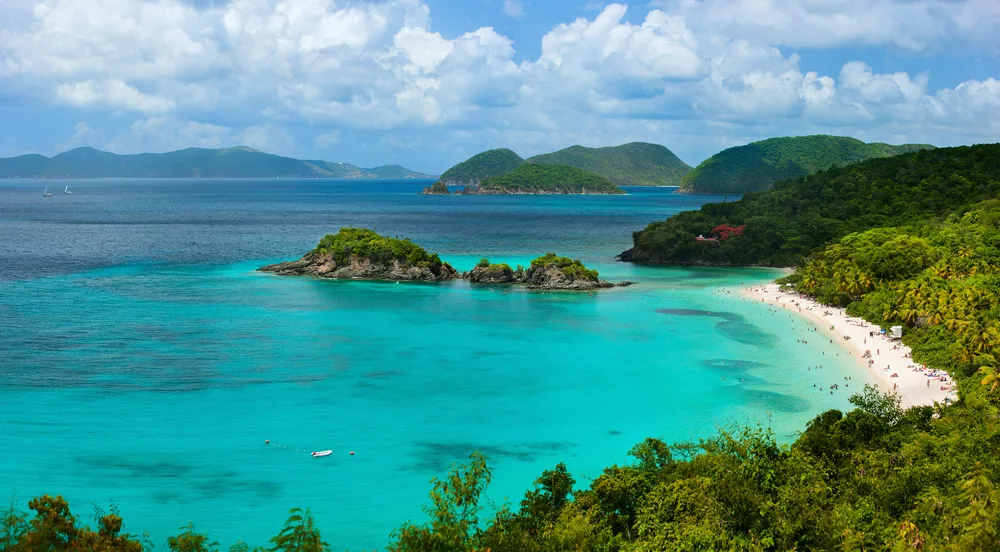
BlueOrange Studio/Shutterstock
The best time to visit the US Virgin Islands is undoubtedly from April through June. These months travelers can enjoy the ideal combination of medium-range prices, pleasant temperatures, and manageable crowds.
However, the islands are so magical that chances are you’ll still have an awesome stay, regardless of when you decide to go.
With its tropical climate, friendly locals, white sand beaches, stunning waters, and quaint towns, we believe everyone should visit the US Virgin Islands at least once in their life. Happy travels!



